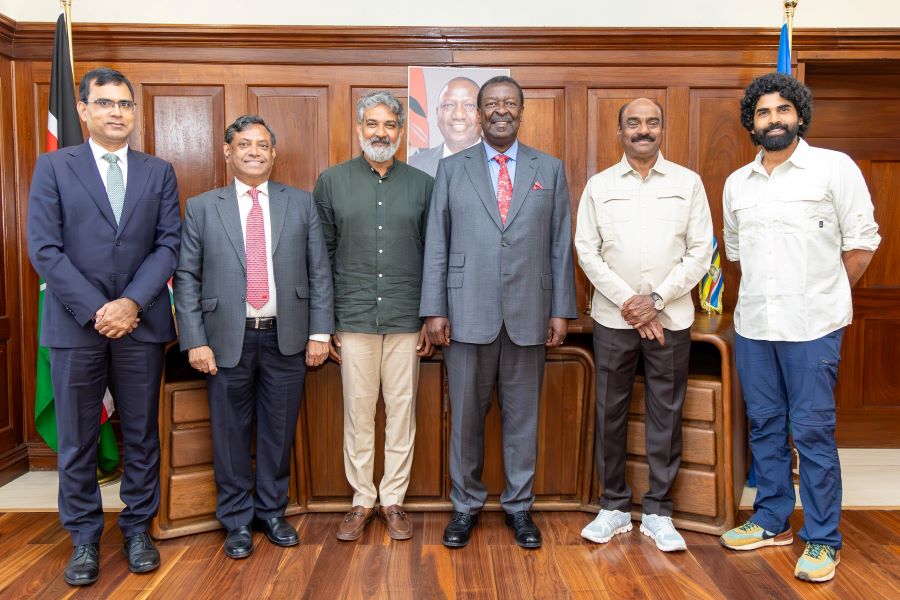The Kenyan telco market is interesting and harsh. It boasts of success stories such as MPESA and its mother company Safaricom, yet at the same time reminds of painful business struggles of its competitors.
Not once have telcos applied to the Communications Authority of Kenya and the Competitions Authority of Kenya to declare the Safaricom a monopoly, albeit unsuccessfully. So how did Safaricom come to dominate the Kenyan market and rise to Forbes list of the world’s most valued 2000 companies?
A short history of Safaricom and the genesis of the telcos of Kenya
Remember the telephone booths on the roadside where people used to queue to make calls after dropping in coins? Well, they were managed by the Kenya Posts and Telecommunications Corporation. Safaricom was established in 1993 as a department in that parastatal monopoly, to spearhead mobile telephone technology and adoption.
Safaricom would later be incorporated as a private limited liability company in 1996. Kenya Posts and Telecommunications Company would be split up in 1999 to form two parastatals: Posta Kenya and Telkom Kenya.
Posta’s main duty was courier services while Telkom would continue with the telephony market. With Safaricom out of the picture as an independent company, Telkom was free to also enter the fast-growing mobile phone market.

It would be until the year 2000 that Safaricom would get a license to operate a voice mobile phone network. But guess what, it was not the first company to get permission.
Another telco was in play, and its name was KenCell.
KenCell was the first mobile phone company to be licensed to operate in Kenya. It was partly owned by billionaire and Sameer Group founder Naushad Merali and Vivendi Telecommunications International.
KenCell had a head start by several months by being the first Kenyan company to be licensed to offer mobile voice services. It had the financial muscle and established itself as a frontrunner early on in the game.
In 2005, a third phone company delved into the murky waters. Econet Wireless Limited owned by Zimbabwean billionaire Strive Masiyiwa won its license back after a court case where a local partner had sought it to be cancelled. Econet established yuMobile.
yuMobile was the darling of many young Kenyans and students, you will understand why later.
Meanwhile, the booth, wire and coin telephone run by Telkom Kenya was being devoured fast. The telephone posts now stood in gloom opposite Kenya Power poles as thieves stole copper wires and vandalized the booths.
Those who could afford to have telephones in their homes were left with inoperable receivers. Office phone numbers became useless. Everything was now digital. Telkom had to transform fast in order to survive. They had the clients but they did not have the knowhow to innovate.

In 2007, the government of Kenya relinquished 51 percent of its controlling shares in Telkom to France Telcom that operated the Orange brand, after converting shareholder loans into equity. The company rebranded to Orange Telecom Kenya. The French would increase their shareholding to 70 percent in 2013.
The short of it, Safaricom established itself as the market leader; KenCell changed hands almost four times; yuMobile would become defunct; and France Telecom would run away from this rough terrain, forcing Orange to rebrand back to Telkom Kenya. Something had hit the fan, everybody was crying, and only Safaricom wore a smug smile. Where did the rest go wrong?
How other telcos failed in Kenya
One would say failing is stretching the truth to the left as there are still more than one player in 2025. Well, they show signs of life but are struggling with need for frequent CPR.
When KenCell got its license ahead of Safaricom, it established itself as a posh company exclusive for corporates and the rich. Its strategy was to offer tailored insanely overpriced post-paid services to corporates while their prepaid call rates and scratch cards were limited to high value.
The cheapest scratch card was worth KES 500. And this was in the year 2000. Imagine that.
Since only the rich and corporates were able to afford a SIM card and a mobile phone, this strategy worked – for a while! A SIM card was at least KES 1000 (can you imagine!) Guess what a feature phone would cost – you remember those Motorola, Siemens and Sagem phones that resembled police walkie talkies, with antennas the size of a mast? They were damn expensive.
Safaricom was a few months late and struggled – also for a while. Even Michael Joseph, the pioneering CEO admitted to being unable to understand Kenyan’s calling habits.
The corporates were already taken. The rich were already taken. What to do?
This is where Safaricom’s futuristic thinking saved them big time. What if they offered cheaper (well, not really cheaper but affordable) service alternatives to KenCell customers? What if they targeted customers KenCell had ignored, the common Wanjiku?
The pricing was a game changer from the start.
While KenCell billed per minute, Safaricom started billing per second. That meant a 61 seconds call would be billed double at KenCell what one would pay at Safaricom. It made sense to even the rich, why pay more?
Safaricom also noticed that more salaried people were actually acquiring mobile phones, even if it was just for prestige (an SMS cost KES 20 then!). They introduced lower value scratch cards for KES 250 and KES 100. KenCell, meanwhile was still wobbling in their big boy syndrome with their KES 500 scratch card. But this was no fashion war between Versace and Oduori Tailoring Gikomba – these were companies basically targeting the same customer.
The consumer decided it was better to save money than to appear rich. They shifted allegiance to the better option, which was Safaricom’s slogan then. KenCell started struggling as revenues stagnated, then expectedly started dwindling. Their struggles officially began.
Celtel International came knocking and bought out Vivendi Telecom in 2004. KenCell rebranded to Celtel Kenya.
Massive advertising had however cemented Safaricom’s name into the heads of Kenyans as the cheaper option owned by Kenyans themselves.
Yes, you read that right. Massive Marketing and Advertising was the second game changer.
Within no time the Safaricom introduced KES 50 scratch cards and brought down the price of its SIM cards. You could now buy a SIM card for KES 100.
The prices of mobile phones were falling every day. Meaning Wanjiku could afford a phone. Wanjiku could afford a SIM card. Wanjiku could afford a scratch card. And Wanjiku could afford to call and SMS at 5 bob per message.
Additionally, in its cannibalization scheme, Safaricom quickly introduced the Simu ya Jamii public phone which anyone could use to call a mobile phone. Anyone could buy the Simu ya Jamii, put up a table and kiosk anywhere along the road or in the village, top up airtime and let people call others at a fee. By the time Telkom Kenya realized the missed opportunity, it was too late to capitalize.

And in its marketing and advertising, Safaricom made sure they spoke the same language with Wanjiku. Speak to a man in his language and you speak to their heart (Nelson Mandela). Every vocabulary you hear that has become a mainstay in mobile communication, such as Bamba, Skiza, Sambaza, etc, were adopted by Safaricom from sheng’/Kiswahili, the common man’s language.
The other companies had similar services, but their language was ‘alien’.
Unable to reclaim its position, Mobile Telecommunications Company acquired an 85 percent stake in Celtel International and started rebranding its subsidiary companies to Zain (all under Zain Group).
Within four short years, Safaricom’s main competitor had rebranded two times, and changed CEOs severally (more than 10 times in 15 years). Michael Joseph was with Safaricom since inception and as at 2019, the company had had only two CEOs (the other being the late Bob Collymore who passed on in mid-2019).
After struggling without success, Zain would rebrand again to Airtel after their operations were acquired by India’s Bharti Airtel in 2010. As years went by, Bharti airtel was rumoured many times to want to exit the harsh Kenyan market. Telkom Kenya and Airtel mooted a merger deal that collapsed at the tail end of negotiations in 2020.
Meanwhile, Econet’s yuMobile had a false start.
First Econet had capitalization issues which led to frequent court cases that sought to nullify its license on that premise.
Indian giant Essar acquired Econet in 2008. It then bought out the two local shareholders of yuMobile – Mr Jos Konzolo and Mr Peter Kibiriti – in 2013, and tried in vain to make the telco gallop.
Despite entering the market with cheap prices (it was the first company to introduce free SMS and bundle voice calls) it did not succeed. Young people and students would spend hours calling and smsing for free on Yu. They were happy, but the company was definitely not making any money.
Yu was the first to introduce group/conference calls. So three or more people could join a call from different towns and converse for hours. For some reason, freebies didn’t endear Yu to the masses. No one can understand such phenomenon in business.
Another challenge was that Yu’s infrastructure was sparse and constrained.
In 2014, yuMobile left the Kenyan market. No one noticed. No one missed them.
In an agreement, Safaricom acquired Yu’s infrastructure and Airtel acquired the customer base. Guess who made the brightest decision in this shared acquisition.
On the other side, Orange Kenya was having problems of its own in growing its customer base. France Telecom had increased its shareholding to 70 percent in 2013. After failing to make profits, the French couldn’t take it any longer and sold part of its stake to Helios Investment Partners in 2015.
The company rebranded back to Telkom Kenya in 2017 after the government acquired back 40 percent stake with Helios retaining 60 percent.
The Advent of Mpesa
To say the least, MPESA was probably the most lethal nail in the war of the telcos. Backed by massive marketing and investment in agents across the country, MPESA resolved the biggest problem for the majority unbanked Kenyans.
The rest of the telcos appeared hopeless.
Since Safaricom had the largest agent network, the other telcos sought the help of CAK to force the company to let its agents also run Airtel Money and Orange Money. They got a breakthrough in 2014. But that was not enough.
They sued Safaricom again to the regulator to allow customers to be able to send money across the platforms. His would mean an Airtel Money customer could send cash to MPESA without changing their lines.
It is only in 2022 that the regulator forced cross-platform money transfers. T-Kash (formerly Orange Money), Airtel Money and MPESA were now interoperable.
Still, this was not enough.
The new submission is to force MPESA to be split from Safaricom and for the two to operate as independent companies. Let’s see how that goes.
What is the future for the other telcos in Kenya?
MPESA has strongly entrenched itself in the global mobile money system and pundits have argued that it was now time the money transfer service was declared a company on its own to give competitors room to grow.
While Airtel Money and T-Kash by Telkom are way cheaper, MPESA is more widely distributed hence the market capture. Even though they offer similar products, Safaricom seems to have understood the consumer’s thought process and language.
Surprisingly, Safaricom’s once ‘cheapest’ products and services are now the most expensive in the market.
Cutting edge innovation, well distributed infrastructure and effective marketing are key to giving Safaricom the competition it deserves. There is no better time than now when many consumers are disillusioned by Safaricom’s ridiculous prices.
In fact, Safaricom was forced to change its slogan from The Better Option after consumers recoined it to The Bitter Option.
However, high internet and data prices and call rates, insane MPESA prices and costly merchandise by Safaricom are neutralized by life changing innovation especially in fintech where it has entrenched itself in every facet of Kenyans’ financial lives.
It would need a miracle for Airtel Kenya and Telkom Kenya to topple Safaricom, but they still have opportunity in other sectors such as the internet space. Meanwhile, another player is slowly creeping in — Jamii Telkom, whose story may end up being as remarkable.















